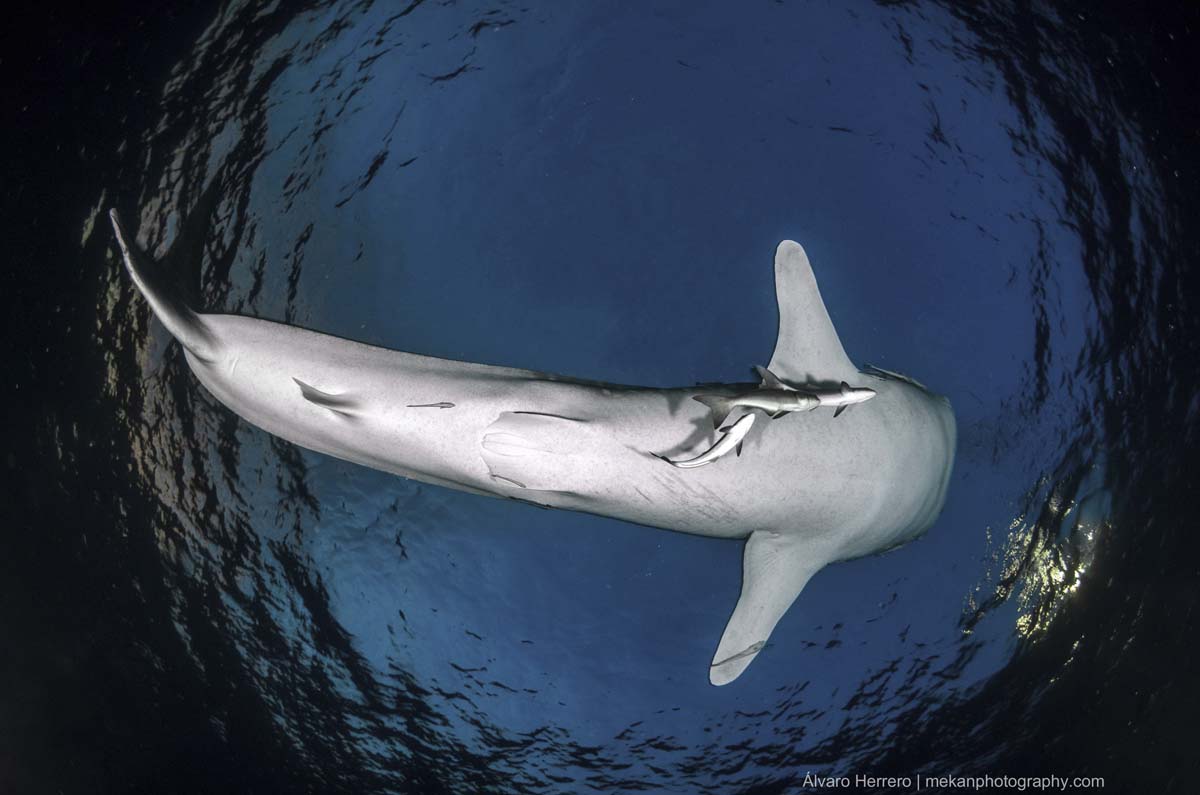 Whale Shark - Credit: Álvaro Herrero Mekan Photography
Whale Shark - Credit: Álvaro Herrero Mekan Photography
The largest fish in the sea is the gentle giant known commonly as the Whale Shark (Rhincodon typus). On this page you can read about the species, and where & when is the best time to find them. From The Caribbean to Western Australia, including Africa and Asia, divers around the world never get bored of meeting these wonderful creatures up close! These huge plankton-feeding sharks can grow to more than 12 metres in length, with unconfirmed reports of up to 18 metres! They are a fish, because they breathe water to get oxygen, but their name is due to their huge size. And yes, they are a shark, because they have skeletons made of cartilage, not hard bones. Whale Sharks normally swim very slowly near to the surface, with their large mouths open allowing them to filter feed on tiny plankton and other microscopic organisms. An adult Whale Shark has very few natural predators and they are generally not scared of divers. In addition, they have no reason to hurt divers, although anyone getting too close is risking injury from the huge tail. A whale shark dive is possible to enjoy for all levels of scuba diver, and even some lucky snorkellers. Apart from a couple of locations in the world, a whale shark dive is never guaranteed. This is a pelagic species, meaning that they swim around oceans, following food and breeding opportunities. Although experienced divers and boat operators can predict when they might be around, Whale Sharks can turn up out of the blue at any time, or not be seen for weeks at places where they are expected.
The Whale Shark
Rhincodon typus is its scientific name, but we all know this gentle giant as the Whale Shark. Its common name comes from it being the largest of all shark species, and as big as many species of whales. It’s the largest species of any fish, growing to 12 metres or more in length, and weighing up to 20 tons! Being a fish, it breathes water through its gills to obtain oxygen. And it feeds on plankton and other tiny organisms, by swimming with its mouth open filtering the food through its gills.
There’s still a lot for science to learn about Whale Sharks, including where they start life and how long they live for. The general belief is that they reach sexual maturity at an age of 25-30 years, and live on average until around 70 years old. But some believe they can for more than 100 years! It is still unclear where they breed, but the latest research suggests that most Whale Sharks are born in the Galapagos Islands. This is because 90% or more of the adults who arrive at the Galapagos Islands at a certain time of year are pregnant females. Whale Sharks give birth to dozens of live pups, which are normally 40-60 cm. in length. Sadly, Mother Nature ensures that just a few of each litter survive to adulthood. Other facts include that Whale Sharks have up to 3,000 tiny teeth but don’t use them to eat, and adolescent males are not very adventurous.
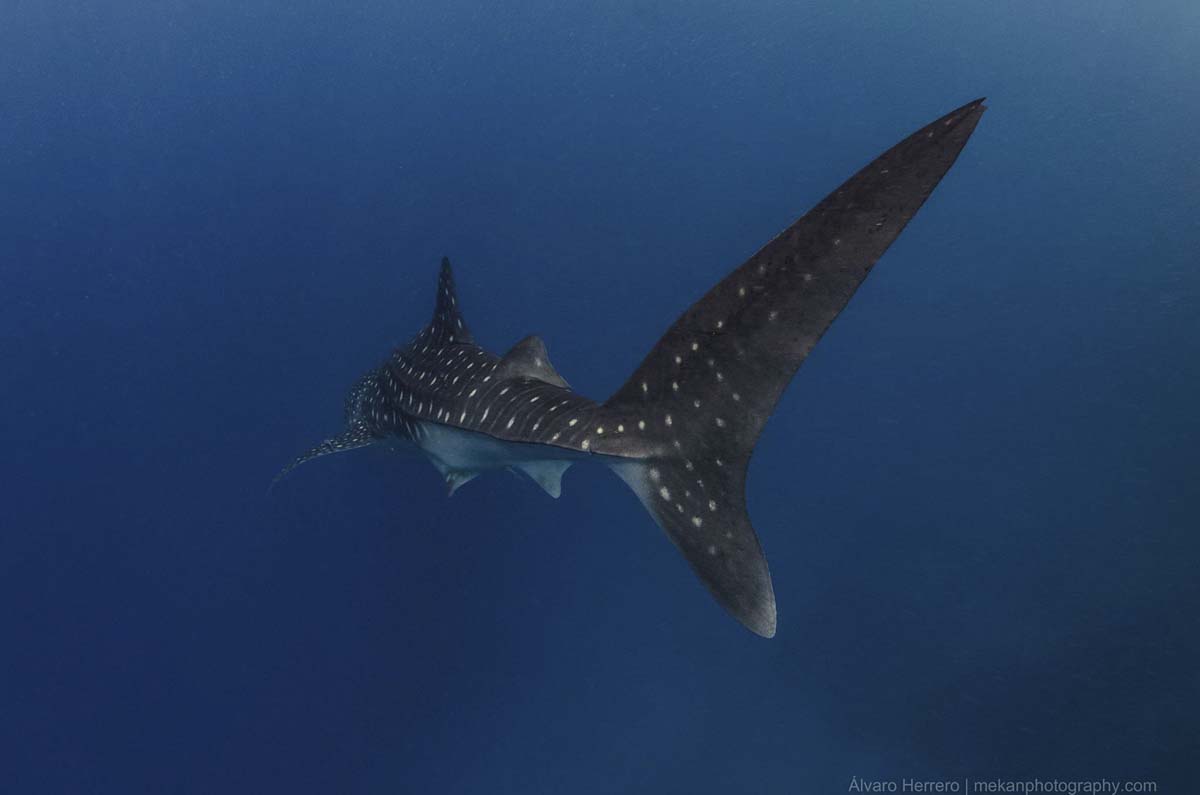 The Whale Shark - Credit: -Álvaro Herrero Mekan Photography
The Whale Shark - Credit: -Álvaro Herrero Mekan Photography
Diving with Whale Sharks
Nearly all scuba divers are keen to experience a Whaleshark dive. It’s the ‘Holy Grail’ for many recreational scuba divers, simply because these are the largest fish in the sea, and of course, are harmless to humans. It also helps that they swim near the surface in warm & tropical waters, meaning that it’s more comfortable for the divers and they’re able to stay in the water for up to an hour. Compared to something like Great White Sharks (Carcharodon carcharias), which are found in colder water and still regarded by many as a danger to share the water with, Whale Sharks are the perfect species to see underwater. They’re slow swimmers found in tropical seas and they're harmless to humans.
Even though it’s possible to get close enough to touch a Whale Shark or even hitch a ride on its dorsal fin, this behaviour is totally unacceptable. The golden rule for all scuba divers is never to touch any living species, from the smallest corals to the largest fish. There are many reasons for this, but most are to protect marine life from damage or infection. Of course, anyone foolish enough to touch fish, reptiles, corals or invertebrates while scuba diving is likely to risk injury from what they touch, and certainly reprimand from their peers or Divemaster.
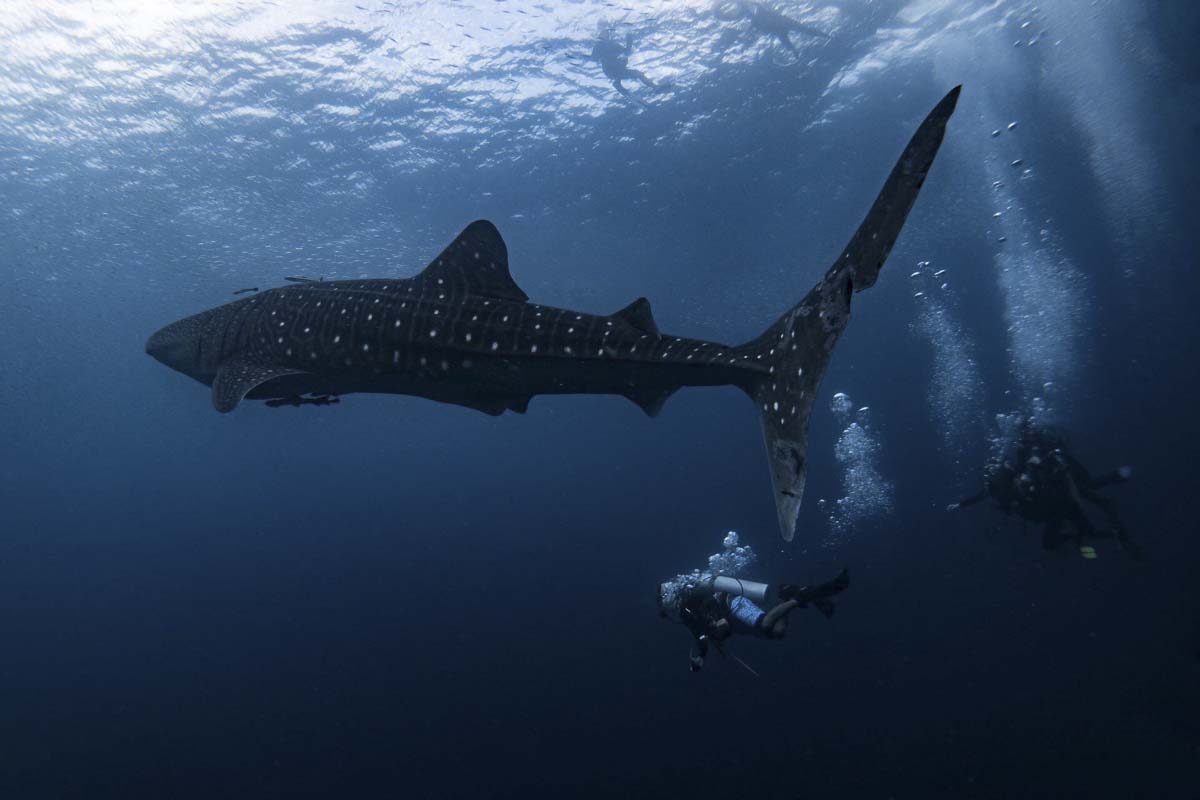 Diving with a Whale Shark - Credit: Kevin Michael Gacad
Diving with a Whale Shark - Credit: Kevin Michael Gacad
Snorkelling with Whale Sharks
Although most sightings are enjoyed by scuba divers, it’s also possible to snorkel with Whale Sharks. These graceful & gentle giants often swim & feed near the surface, within depth limits of even inexperienced snorkellers. Just like the divers though, it’s important to give the shark space and never to touch it. It’s also important to stay safe. It’s very easy to become overexcited and drift in a current out of your depth or from your boat. And if the Whale Shark is at depths deeper than you are comfortable & safe descending to, it’s important to stay at the surface and enjoy the view from there.
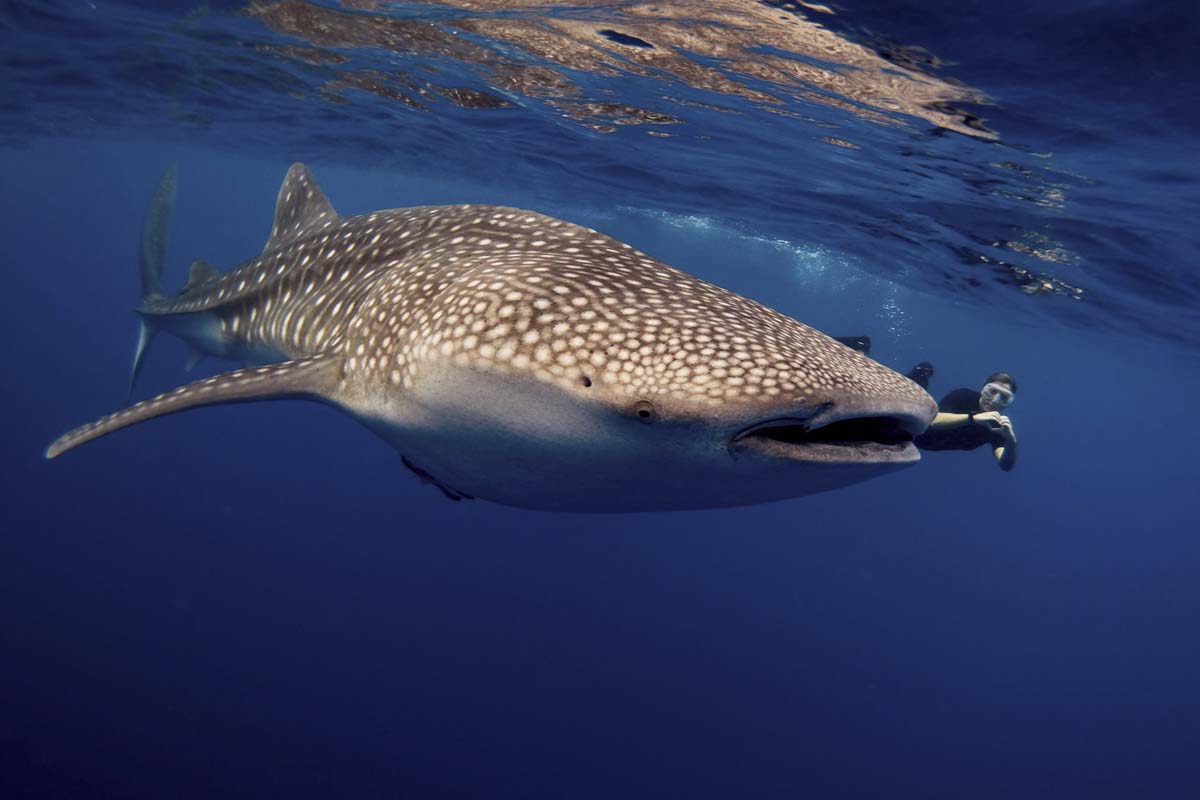 Snorkelling with a Whale Shark - credit: Kevin Michael Gacad
Snorkelling with a Whale Shark - credit: Kevin Michael Gacad
When & Where to Dive with Whale Sharks
As we have already mentioned, it’s never guaranteed that you will be able to see a Whale Shark while snorkelling or diving. These pelagic giants have total freedom of the world’s seas & oceans, and each individual swims thousands of kilometres during its lifetime. They are as likely to turn up unexpectedly where they are not normally seen as they are to not show up where you expect them to. Any Whaleshark dive is a very special occasion, but it’s important to prepare for, expect and enjoy the dive for the rest of the marine life you encounter. If a Whale Shark is spotted, great! But if not, then never mind. Some over-expectant divers return from what they expect to be a Whaleshark dive disappointed, even though there was plenty of other marine life to see.
Saying this, some of the Whale Shark hotspots considered to be your best chance of diving with these wonderful giants are listed below, in no particular order. Please note that other websites and/or researchers may not agree with all of the entries on the list, and/or some of the details.
Ningaloo Reef, Australia: March - June
Ningaloo Reef is located on the north-western corner of Western Australia, right on the edge of the Indian and Southern Oceans. The weather here is ideal for diving and snorkelling, and the vast & deep oceans are fed but nutrient-rich currents. It’s the perfect place for all kinds of marine life to congregate to feed on the rich waters. It’s a UNESCO World Heritage site, so certain rules & regulations are in place for visitors. WhaleShark encounters at Ningaloo Reef are actually more popular for snorkelling than for divers.
 Whale shark dive - Credit: Helen Holmgren
Whale shark dive - Credit: Helen Holmgren
South Ari Atoll, Maldives: December - May
It’s actually possible to dive with Whale Sharks year-round in the Maldives, but December to May offers the best weather & sea conditions. The Whale Sharks here tend to be smaller than those seen in the other locations on this list. This could be because juveniles feel safer in The Maldives than at other locations, where they move to in adulthood. Most diving in The Maldives is done by week-long liveaboards but there are also opportunities for day trips from the resorts.
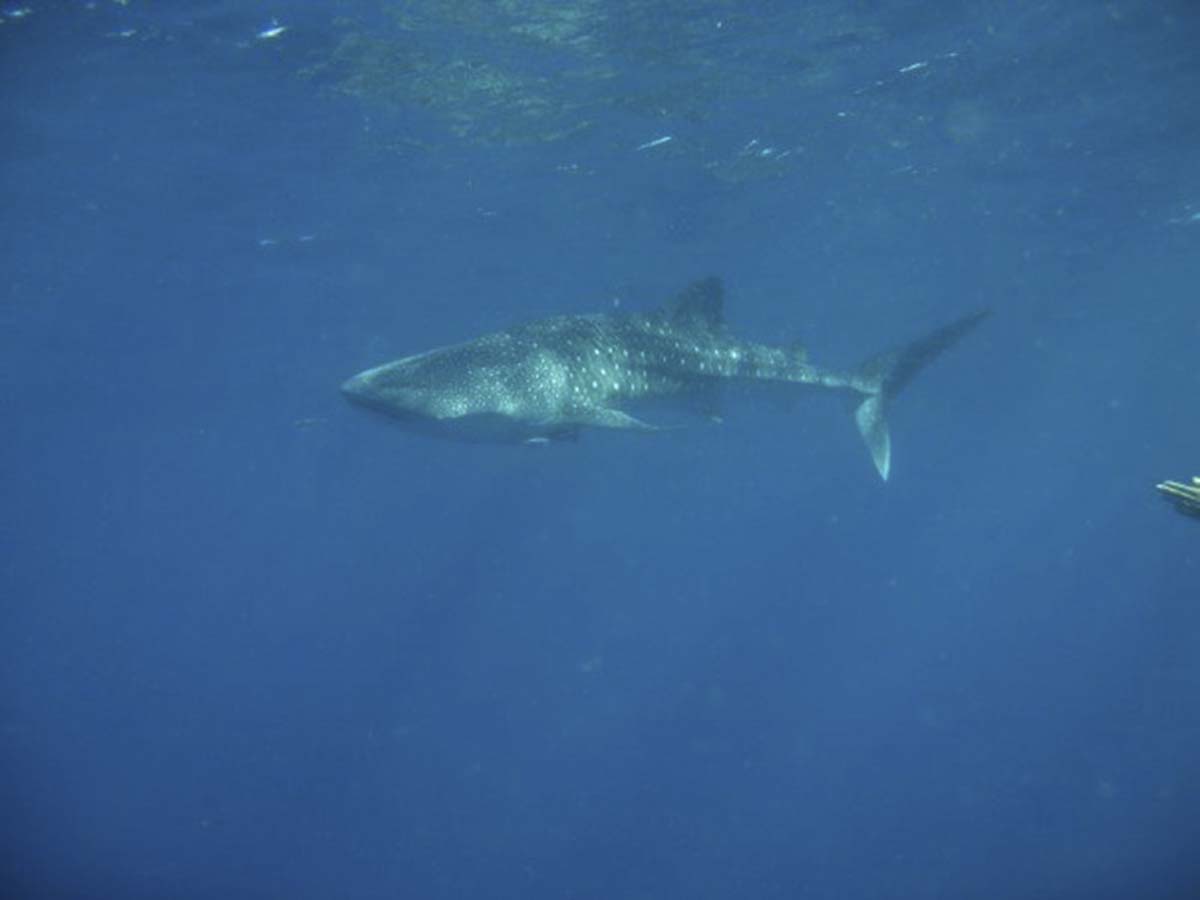 Whale Shark Maldives - Credit: Emmy Ahlen
Whale Shark Maldives - Credit: Emmy Ahlen
Cenderawasih Bay, Indonesia: June - October
Cenderawasih Bay is on the north coast of West Papua, a huge island shared by Indonesia and Papua New Guinea. On the northwest side of this island is Raja Ampat, one of the best scuba diving locations in the world. Although the Whale Sharks are probably in Cenderawasih Bay most of the year, not many Indonesia scuba diving liveaboards visit the area from November to May. This is because they’re sailing around Raja Ampat where the diving & weather is world-class. But in the few months when Raja Ampat’s weather is less favourable, the boats offer Whale Shark liveaboard trips to Cenderawasih Bay, normally using harbours in Manokwari, Nabire or Biak for departure and return.
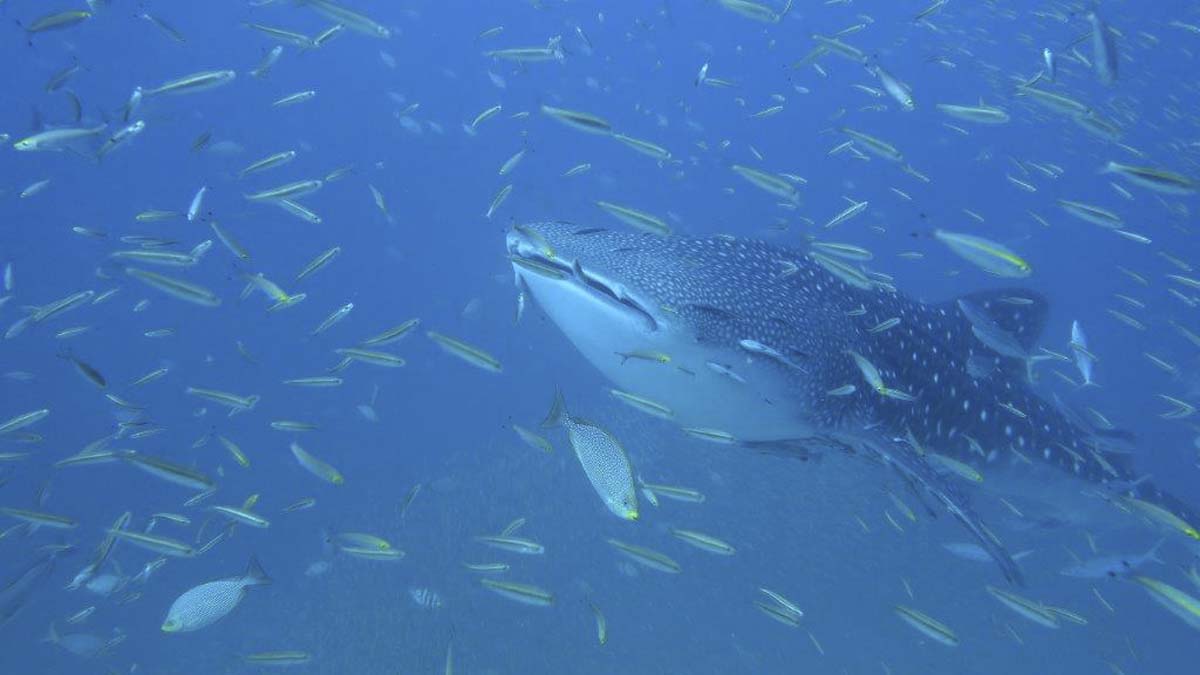 Whale Shark Cendarawasih Bay Indonesia - Credit: Helen Holmgren
Whale Shark Cendarawasih Bay Indonesia - Credit: Helen Holmgren
Galapagos Islands, Ecuador: June - December
These world-famous islands are home to some of the most unique creatures in the world. Scuba diving at The Galapagos Islands is wonderful for many reasons, but diver numbers are limited by the government to protect the ecosystem. Even if you don’t see a Whale Shark on your dive, you are very likely to see something else special. Even though these islands are close to the equator, the water temperature is much colder in many other locations on this list. This is due to cool ocean currents that bring up food from the depths of The Pacific Ocean.
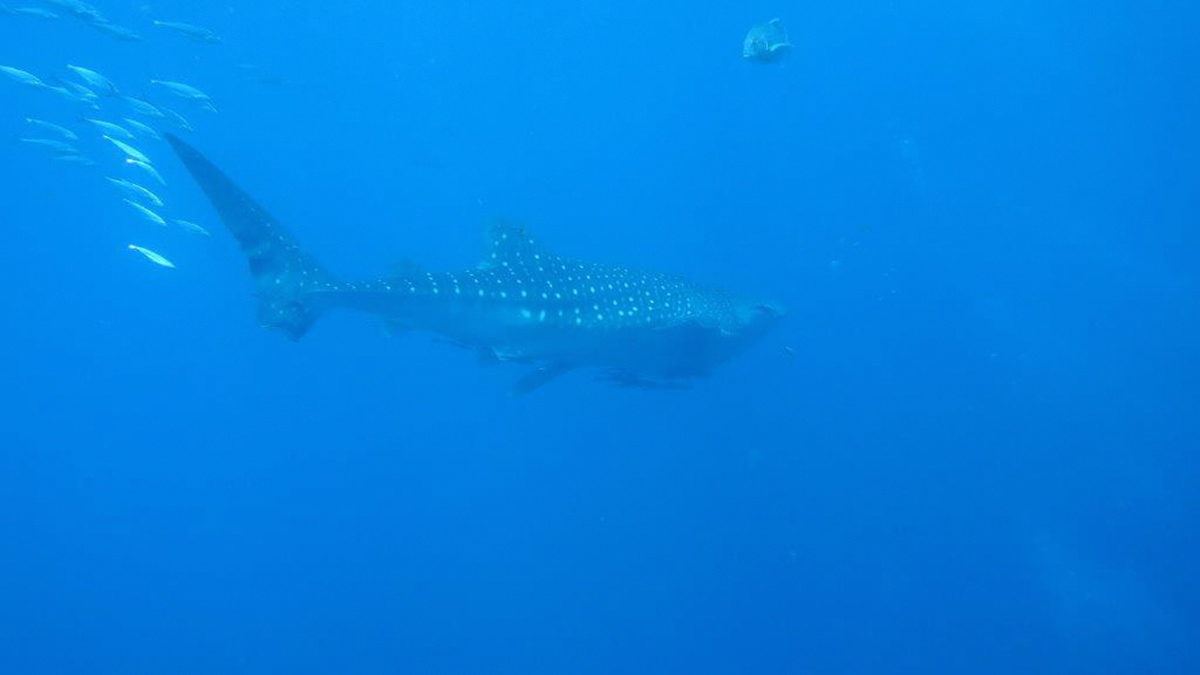
Richelieu Rock & Similan Islands, Thailand: November - April
On the west coast of Thailand sits Richelieu Rock, technically located within the Surin Islands National Marine Park. A couple of hours south from there via a Thailand scuba diving liveaboard boat is Koh Tachai, which is within the Similan Islands National Marine Park. Mostly in the months of February to April, Whale Sharks are seen here, and sometimes with Manta Rays as well. Although it’s possible to snorkel with Whale Sharks here, it’s highly unlikely that you will get chance to, unless one is spotted from the diving boat between dives. But a whale shark dive is very possible in the height of the diving season at Richelieu Rock & Koh Tachai. They’re also seen by divers at Koh Bon (south of Koh Tachai), and around the Similan Islands from time to time.
 Whale Shark Thailand - Credit: Helen Holmgren
Whale Shark Thailand - Credit: Helen Holmgren
The Philippines: Year-round
There are several places in The Philippines where you can snorkel and dive with Whale Sharks, but it’s important to choose the correct place & time and think about more than just your own experience. For example, in Oslob, Cebu the sharks are hand-fed by locals in order to attract them, and in turn tourists & their money. In contrast, you can snorkel and swim with Whale Sharks in a more natural state in nearby Leyte. South Luzon also offers Whale Shark encounters from February to April, for snorkellers as well as for divers.
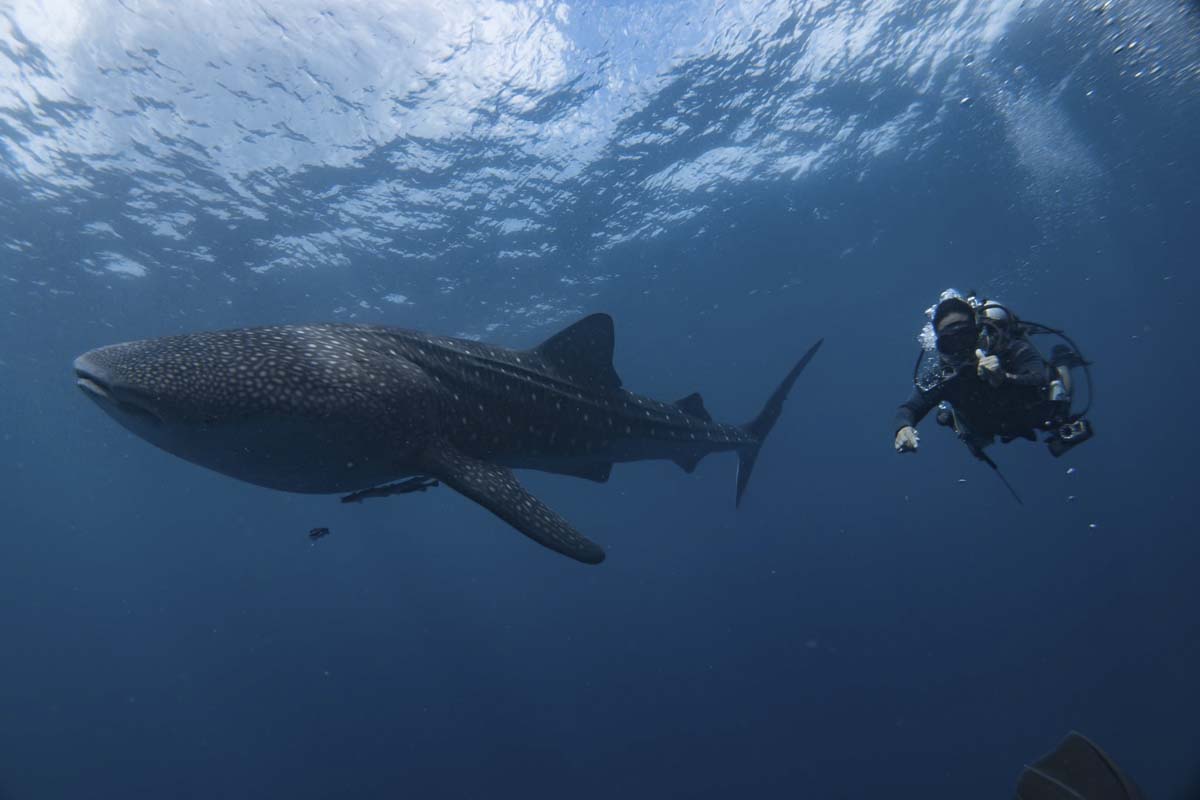 Whale Shark Philippines - Credit: Kevin Michael Gacad
Whale Shark Philippines - Credit: Kevin Michael Gacad
Placencia, Belize: March - June
Dive either side of the full moons at Gladden Spit from March until June. Here Grouper and Snapper breed, which results in millions of their eggs being released into the sea. Whale Sharks time their migration to perfection to feast on the abundant eggs and other plankton species in the water at this time.
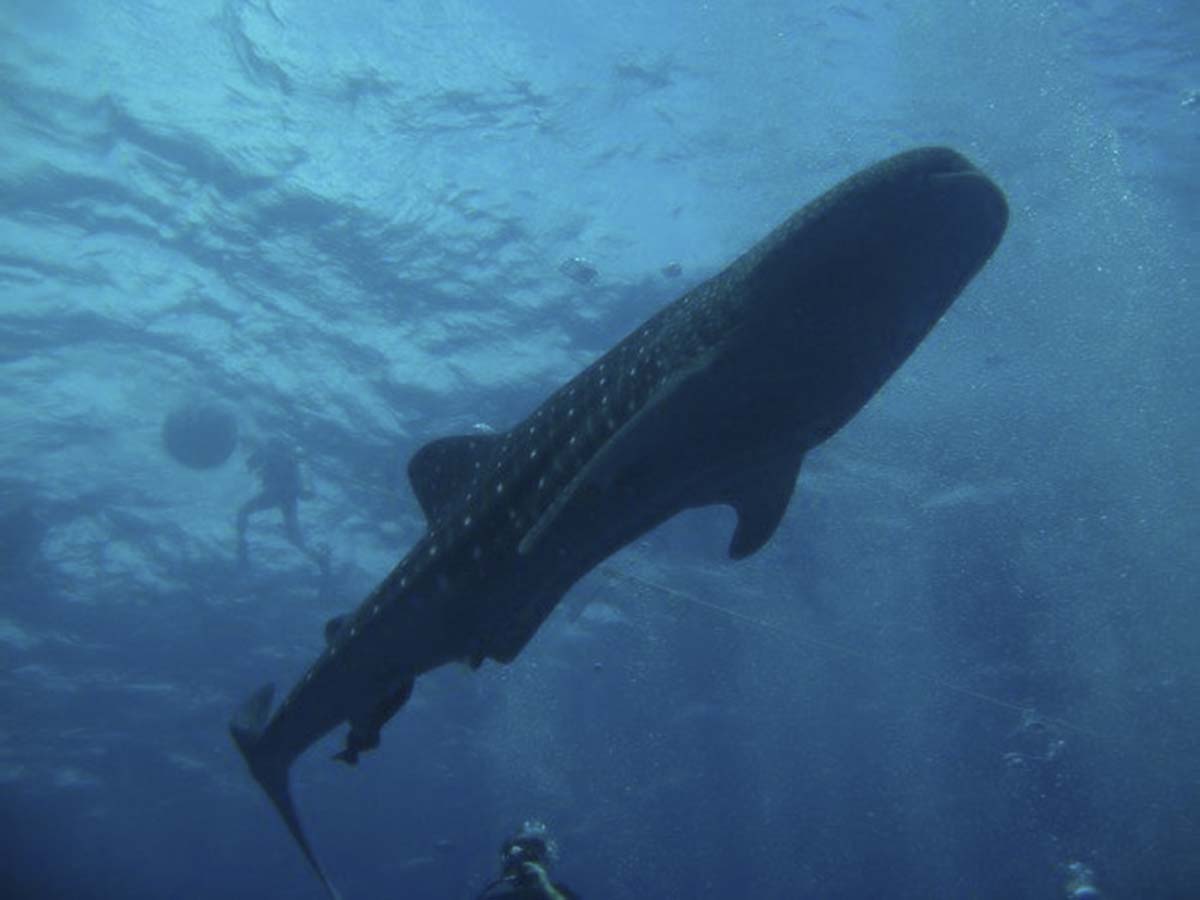 Whale Shark Belize - Credit: Emmy Ahlen
Whale Shark Belize - Credit: Emmy Ahlen
Utila, Honduras: Year-round
Although it’s possible to dive & snorkel with Whale Sharks here all year round, March & April and August & September are the best months. The north coast of Utila is generally regarded as being the better area. Some claim that Utila offers the best chances of seeing Whale Sharks in all of The Caribbean.
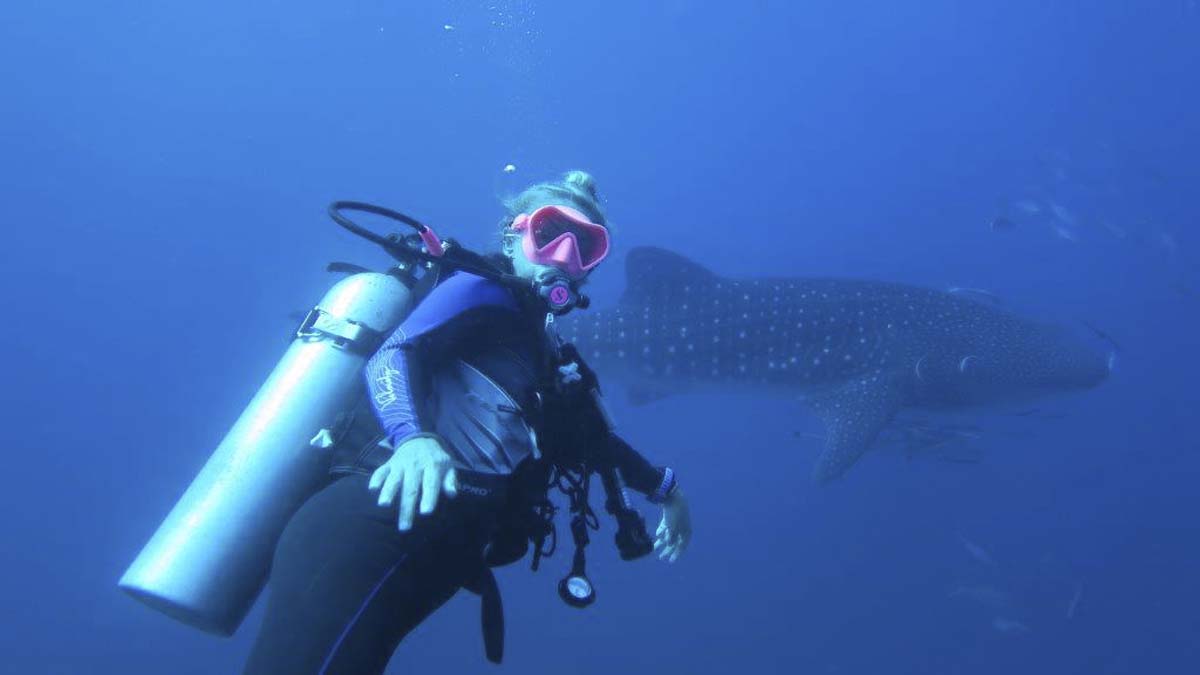 Whale Shark Utila - Credit: Helen Holmgren
Whale Shark Utila - Credit: Helen Holmgren
Tofo Beach, Mozambique: November - February
This is your best chance of diving with a Whale Shark in Africa. In the area known as Whale Shark Alley, there are three main dive sites where it’s possible to see the sharks, which are here for much of the year in search of food.

There are plenty of other places around the world where you can dive or snorkel with these wonderful sharks. These include Myanmar (Burma), The Andaman Islands, The Red Sea, and around Central America. They can be found in warm seas & oceans around the world, except for in The Mediterranean Sea. Have you dived or snorkelled with a Whale Shark? Let us know your experiences in the comments below.
